You cannot travel in Mexico without recognizing its colonial past and Spain’s influence on the region. But to let our exploration stop at the history books’ romanticized version of explorer and conqueror is to leave the story of day to day experiences untold. The Ruta de Don Vasco explores the beauty that local indigenous artisans have made from Mexico’s complicated past.
Traveling the entire route through Michoacan you’ll have an opportunity to visit 7 major sites. In each town, still steeped in early traditions, local artisans, craftsmen, and women show their world-class talents in street-side shops and stalls.
Get Your Travel Goals Newsletter & BONUS Workbook
There are two circuits to this route. Our focus in this post is the dramatically named Soul of Don Vasco. This full-day trip takes you west from Morelia as you visit five towns: Santa Clara del Cobre, Patzcuaro, Tzintzuntzan, Quiroga, and the island of Janitzio. Each town is an opportunity to see the generational development of an artist’s skill. The trip highlights both Don Vasco’s 16th century vision for economic independence and the skill of local indigenous population of Purepecha.
Table of Contents
How to Customize This Trip
If you wish to base yourself in Patzcuaro or have more time, you can see our suggestions for additional towns to visit at the end of this article. Or to see more about the second route, Purepecha Essence, where you travel further out to Uruapan, see our post on horseback riding to the Paricutin volcano and city ruins here.
History of Don Vasco
This day trip is named after Don Vasco de Quiroga, a Spanish bishop who came to Mexico at the age of 60. He led the economic development of the region using principles from Thomas More’s Utopia. Don Vasco, or “Tata Vasco” as some call him, imagined a different relationship with the indigenous. Yes he focused on their spiritual conversion, he was a bishop after all. But he also wanted to care for them through a system of native led government, economic development and a collection of city hospitals. These served to support the poor, ill and homeless populations. A humanist, he added what he could from Utopia to the Mexican landscape. Understanding that his role was powerful but his purse strings limited, he focused on developing this societal ideal in just his region of influence around Morelia, Michoacan and its surrounding towns.
Get Your Travel Goals Newsletter & BONUS Workbook
How to Get Here

We suggest grounding yourself in Morelia, Michoacan. This major city is a worthwhile site on its own. Its colonial architecture is thoughtfully preserved in the historic downtown district. With over 200 historical sites as well as many of the usual activities and entertainment options of a major urban area, you could easily spend multiple days here. Support your planning for what to do during a stay in Morelia by reading our article here.
Morelia has an international airport. You can fly in from multiple US cities as well as other cities in Mexico such as Guadalajara, Leon or Mexico City. There is no city bus route to or from the airport. So plan to take a taxi from the airport to town.
From Morelia, you’ll be able to travel to Patzcuaro, the first major stop on the route, by bus. There are several first-class buses that leave from Morelia each hour. The bus trip will take about an hour. If you prefer to arrange a private car with your hotel that drive will take about 45 minutes. A rental car or private car will also allow you to move freely from town to town on your own. Though local busses are available to get you from one town to the next should you prefer the cheaper option.
Morelia to Santa Clara Del Cobre
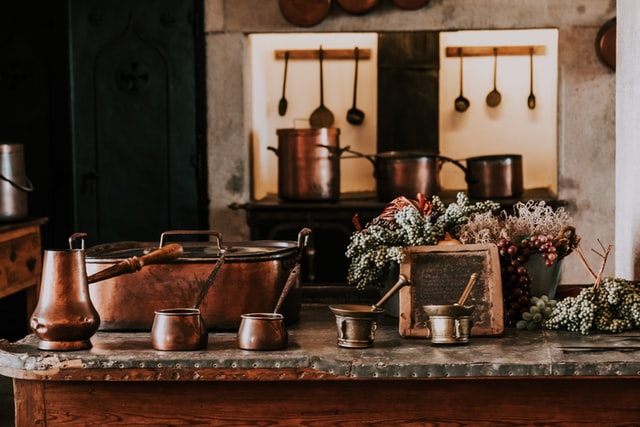
Just over an hour from Morelia and 12 miles south of Patzcuaro is your first stop. This historic site is known as a Pueblo Magico, or Magical Village, Santa Clara del Cobre. You’ll visit world class artisans as they display their knowledge of metallurgy. They specifically work with copper that used to be mined in the area. You can visit Museo del Cobre, the copper museum, and walk through colonial plazas and churches. Be sure to stop into a few of the artisan shops with a working forge that allows visitors. Here you see how the metal is worked to form beautiful pots, bowls and other works of art.
Get Your Travel Goals Newsletter & BONUS Workbook
Santa Clara del Cobre to Patzcuaro
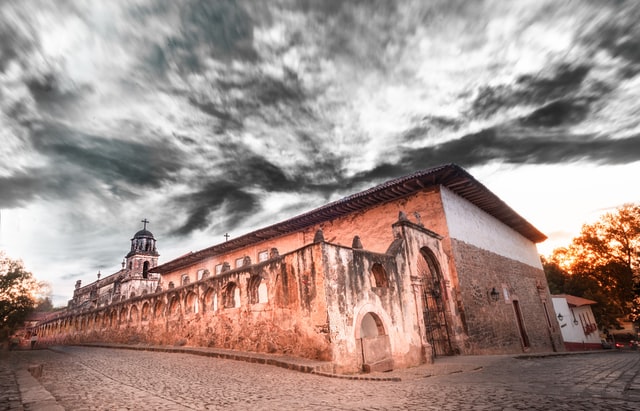
The leg of this tour will take you to Patzcuaro, just 12 miles north of Santa Clara del Cobre or 45 minutes from Morelia. This beautiful town is a blend, as Don Vasco would have wanted, of indigenous and colonial Spanish roots. The colonial town centers around La Plaza Grande with a statue of the patron himself. The nearby Plaza Chica hosts the local mercado, or market. Every day you can buy fresh fruit and vegetables alongside local arts and crafts. Visit the resting place of Don Vasco at The Basilica de Nuestra Senora de la Salud. The school he started, Colegio de San Nicolas to which he promised all descendants of local Purepecha a free education, has moved to Morelia. But the original 16th-century building now houses art exhibits and performances. There is also an interpretive visitor center worth a visit. Here you can further explore and get insight to the route you are taking.
Lake Patzcuaro and Janitzio Island
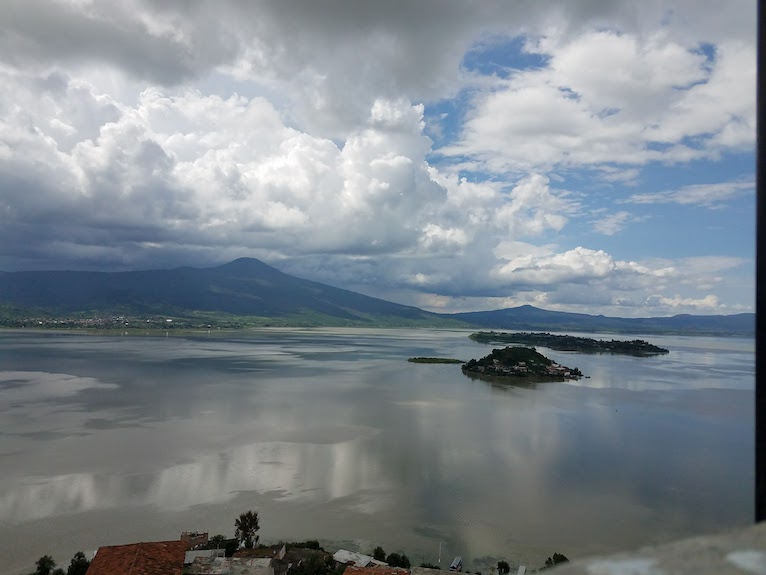
Just minutes from the Patzcuaro town center you reach Lake Patzcuaro. You could make the walk there from town but you’ll probably be more comfortable taking a taxi. From the docks, frequent boats take you out to the main island, Janitzio. If you have kiddos with you, vendors sell small fish nets on poles to the children that they can drag along in the water while crossing the lake. You can see fishermen in boats catching tourists’ attention by holding up their much larger butterfly-shaped nets. These catch the lake’s white fish. Restaurants near the shore sell charales, small local fish battered, and deep friend. Our son loves them and swears they taste like french fries.

Once on the lake you cannot miss the island focal point, a statue of revered hero of the revolution, Jose Maria Morelos. As you climb stairs to the top of the island toward the statue, you’ll be shamed at least once as an elderly man carrying stacked cases of soda climbs past you. Review that resolution to work out more during a stop to catch your breath at any one of the local shops that caught your eye.
Get Your Travel Goals Newsletter & BONUS Workbook
If the climb up to the top of the island to the foot of the statue didn’t drain your energy you can climb the stairs inside the statue. The peepholes in his raised fist provide more panoramic views of the lake and surrounding region. Beautiful murals that depict the life of Morelos cover the walls on the way up the spiraling stairs. This creates a very user-friendly history lesson and an opportunity to appreciate the work of artist Ramon Alba de la Canal and others.
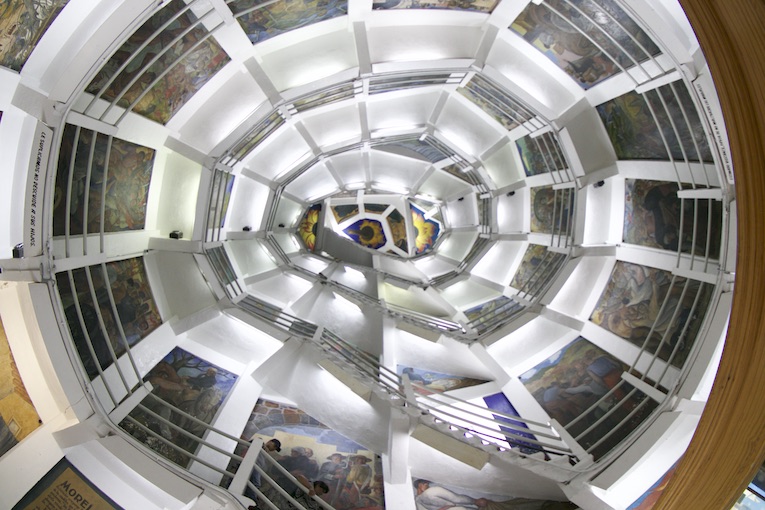
Next Stop Tzintzuntzan

Just 25 minutes from Patzcuaro is the town of Tzintzuntzan. The name means “place of the hummingbirds.” Along the main road artisans display their work with timber and palm as well as pottery. The ruins, just outside the town, are best appreciated with a guide. He or she can explain the history of the Purepecha people and their relationship with Don Vasco who is said to have planted the 100 olive trees by the town church.
Just 10 minutes past Tzintzuntzan is Quiroga. This is a must-stop for a meal. Their market is legendary and most famous for their carnitas. This slow-roasted pork is pull apart tender. You will not regret a stop here.
Get Your Travel Goals Newsletter & BONUS Workbook
If you’d like to make a stop from Quiroga on your return to Morelia check out the town of Capula. The people there do amazing work with ceramics. Bring home a beautiful dish set or the unique and intricately designed catrina dolls so famous in the area.
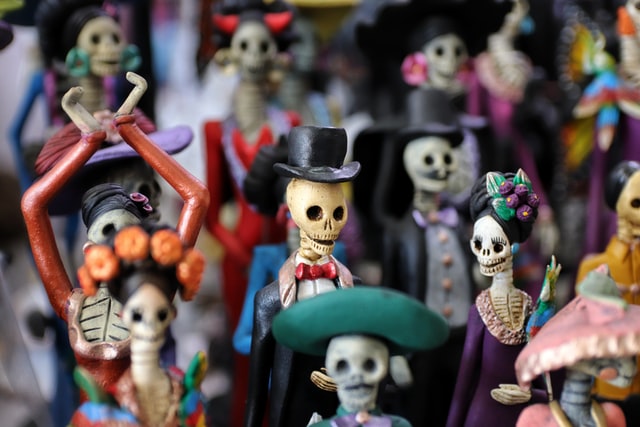
Each town displays a skill which Don Vasco envisioned would allow the people to trade and build an economy with each other. With more time numerous other towns can be visited either way around the lake. These skills passed down from generation to generation are shown daily in towns such as Erongaricuaro, an artist’s hub once visited by Diego Rivera and Frida Khalo. Or take more time coming in to Patzcuaro from Morelia. Stop to visit Tupataro, where artwork on the ceiling of Santiago Apostal Church has been restored with such care and precision that it could be declared the Sistine Chapel of Mexico.
Regardless of how you view the complicated legacy of Don Vasco, and Spanish influence, you cannot help but appreciate all that has evolved from the artist that remain.
Interested in other cities that encourage visitors to delve deeper into Mexican culture and history consider a visit to the city of Guanajuato. Let our guide help you discover the best the city has to offer.
